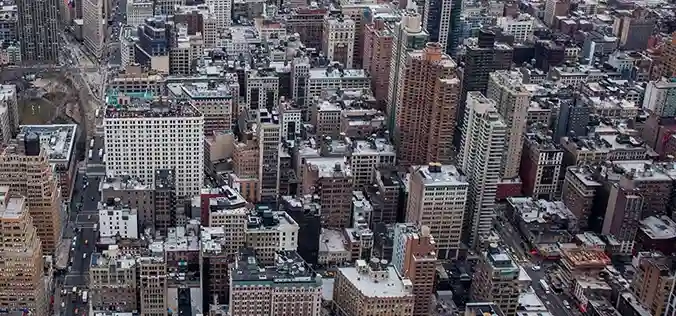Fire safety in high rises and dense urban areas is a major issue. What are the main causes for the same relating to the façade and fenestration design?
More than half of the world’s population now live in urban settlements. The rising demand for space within our cities have led to unplanned and poor quality developments and has choked the urban infrastructure, including health care and emergency services, beyond its capacity. Fires can start and spread easily in such locations due to a number of factors such as poor quality electrical distribution and overload, combustible fuels for cooking, flammable building materials, lack of fire hydrants and water supplies and the inability to bring fire-fighting equipment through narrow lanes and alleys to fight fire.
Whilst precluding most of above to prevent fire disaster in dense urban areas may remain a challenge, an effective façade and fenestration design has a significant role to play in seizing the spread of fire via the building envelope to floors above and to adjacent buildings.
The key aspects of façade design that could significantly reduce fire spread in a high-rise include:
-
- Building orientation and geometry (sloped, twisted, staggered, etc.)
- Vertical and horizontal projections of the facade system
- Windows/openings and their size, height of the vision glass and
- Spandrel panels and sprinkler system design.
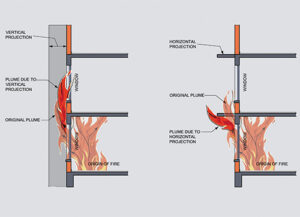
As architects create innovative façades, they need to be mindful of how the façade geometry and orientation can influence fire safety. Using curved and sloping facades, rotated floor plates, etc., tend to make its engineering and installation complex, and may compromise on a fire safe design. The effect of wind on the orientation of complex façade geometries can increase or decrease the flame and temperature exposure on the façade system.
Vertical projections on the façade could enhance the upward fire spread because of the channeling effect, whereas horizontal projections hinder upward fire spread because of the diversion of flames away from the building (ref. figure 1). While designing the facade of a high-rise buildings, architects need to be mindful while providing vertical projections along the sides of openings. Depending on the proximity of openings between floors and if they are protected or sprinklered, horizontal projections are effective in controlling the spread of fire between floors.
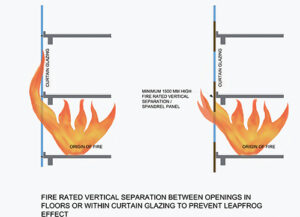
Curtain walls designed with a small vertical separation between floors could allow fire to burn through the façade and jump to the upper floor very quickly. Spandrel panel between floors or other means of vertical separation of min. 1500 mm will limit the leapfrog flame extension and block the heat transfer to the floors above (ref. figure 2).
Glass façades are used in plenty on modern building envelopes. Not all of them in dense urban areas comply with the regulations on use of glazing within fire rated assemblies. A façade fire can cause glass to fracture and even if not, the thermal radiation through it may ignite combustible material on its other side and allow fire to spread rapidly on the floors above and to adjacent buildings. Integrating automated sprinkler line within the glazed facade system design has a very successful record of sustaining glazed facades in major fire incidences. Considering this, for buildings designed with thermal radiation transmitted through the glass layer may ignite combustible materials on the other side. Thus the position of openings on the facade relative to each other is important in preventing spread of fire through them.
22w Such openings may alternatively be separated by a projection of minimum 30 inches as a flame barrier. However, if the immediately lower window is protected by at least 1-hour fire protection such separations are not required (ref. figure 4). The advent of automated sprinkler systems has offered more flexibility to design by removing the necessity for fire rated assemblies for glazed openings. Tests have shown that dedicated automated sprinkler systems can provide more than one-hour fire protection to tempered or heat strengthened glass windows.
As a result, in fully sprinklered buildings, the IBC and NFPA 5000 do not require fire resistance rated separations like spandrels or flame deflectors with the openings in the building façade.
What is the importance of ‘perimeter fire barrier systems’ in the prevention of fire spread?
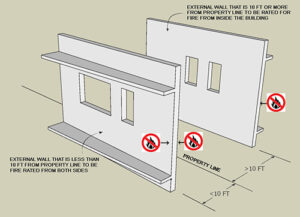
The curtain wall of the external façade of a multistoried building stands separate from the building structure and is fixed to the floor slabs for support. The gap between the curtain wall and the edge of the floor slab usually ranges from 30 to 150 mm. These gaps between the perimeter of the building and curtain walls are susceptible to the spread of fire, smoke and toxic gases from its origin to other floors. In the past, there have been many serious fire incidences in multistory buildings, causing major loss of property and life wherein fire had spread quickly through perimeter gaps and voids within the exterior curtain walls.
Perimeter fire barrier systems are now an integral part of effective fire stopping and compartmentation of smoke and toxic gases. They are installed in the gap between the floor slabs and the exterior curtain wall. Mineral wool with its high melting temperature, non-combustibility and ability to retain its strength and integrity under fire conditions has been an ideal material to install as a fire barrier in the perimeter gaps (ref. figure 5).
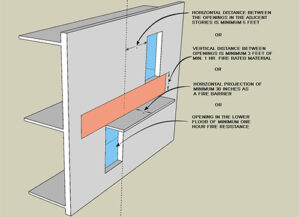
In short, perimeter fire barrier systems are integral to fire and life safety protection and its neglect will directly compromise the safety of the people in the building. Building codes in many countries and the IBC 2015 and NFPA 5000 now requires the installation of approved perimeter fire barrier systems with fire rating matching that of the corresponding floors. The NBC 2016 requires all gaps between floorslabs and facade assembly to be sealed at all levels of approved fire resistant sealant material of equal fire rating as that of the floor slab to prevent fire and smoke propagation from one floor to another.
Brief about the choice of materials like sealants considering fire safety.
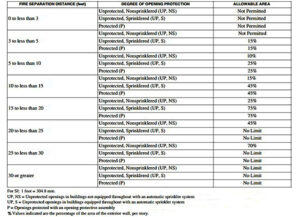
Within a building there are many openings through which services like pipes, cables, wires and ducts pass. There are also interface gaps between walls, floors and the external facade. Fire sealants are used to seal these joints and gaps and thus prevent the spread of flame, smoke, and deadly toxic gasses, and together with the penetrants and the fire barrier, maintains the fire rating of the system. Fire sealants are part of the passive fire barrier system that compartmentalises the fire, keeping the fire contained in the area where it originated, providing additional time for safe exit from the building before flame, smoke and toxic gases can spread any further into the building.
There are varying products within this market segment. Intumescent sealants are used for their ability to expand when exposed to excessive temperature and therefore provide a much tighter gap seal. Intumescent sealants are ideal for use with plastic conduits and pipes and as gaskets within fire doors. They can be vulnerable to humidity and may lose its integrity over time when used in the external. Intumescent sealants are mostly water based. Silicone sealants are widely used within expansion joints, weatherproofing and sanitary joints and also used extensively as fire-rated sealants. Due to their excellent resistance to environmental extremes and elasticity, they are often used in exterior applications and within systems that experience vibration and flexing.
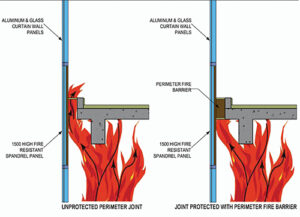
Expanded polyurethane foam fillers (PU) has its use in the building industry in many ways. As a fire barrier, they are generally known as fire foam and are often used to fill small linear gaps or service penetrations of 30 to 40 mm. PU foams are inherently combustible but offer fire-stopping properties when used in narrow voids or gaps. It is thus critical that the manufacturer’s instructions are strictly followed while using it as it may have life safety implications if used incorrectly.
The firestop sealants need to be installed within openings as directed by Underwriters Laboratories (UL) classified firestop system in order to achieve the desired fire rating. The complete assembly of elements (the fire barrier, penetrating pipes/ conduits and the firestop sealant) achieves the rating, not the sealant separately. A firestop sealant by itself does not have fire rating. A firestop system is tested in accordance with the Underwriters Laboratories Inc. standard UL 1479, entitled Fire Tests of Through-Penetration Firestops. The tests determine how long a firestop system can stop the spread of fire and smoke through a fire-rated barrier in the event of fire.
Building codes require the use of firestop systems tested to UL 1479 or ASTM E814 standards. ASTM E814, entitled Standard Test Method for Fire Tests of Penetration Firestop Systems is closely similar to UL 1479. At laboratories other than UL, ASTM E814 standard are used to evaluate rating of fire barrier systems.
